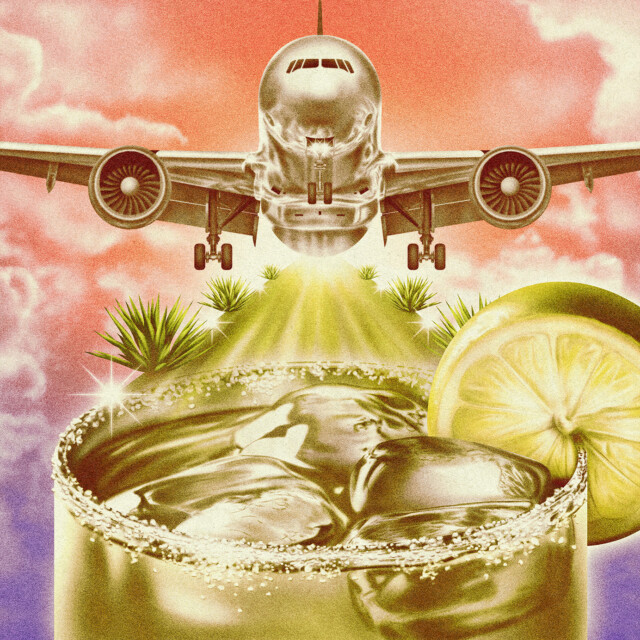The story of tequila’s ascent to being one of the top spirits in America is well-trod ground by now. Yet there remains an unanswered question: How has the surge of American interest in tequila, the spirit, translated into interest in Tequila, the Mexican town and historic region of production? After all, wine lovers have proven more than willing to travel to Bordeaux, and bourbon lovers to Kentucky, so is America’s deepening love for agave spirits resulting in more tourism to Tequila?
Indeed, tourism is growing at a rapid clip, both in the town of Tequila and in Jalisco, the Mexican state that produces the majority of the spirit. From 2019 to 2023 (the most recent year with complete data), tourism to the region grew 19 percent to 1.2 million visitors, which is particularly impressive given the Covid-19 pandemic in the middle of that timespan. While the last half-decade or so has seen particular growth, which certainly tracks with the spirit’s widespread appeal, it’s come on top of an already-existing trend toward more Americans traveling to the region. According to Rocio Lancaster, undersecretary of tourism for Jalisco state, tourism really started growing about 15 years ago, driven in large part by Jose Cuervo expanding its visitor offerings and marketing to Americans, specifically. “Jose Cuervo really invested in different experiences for guests,” Lancaster says, “and they still have some of the most varied offerings for visitors.”
One of the evolving challenges in the region is balancing the different types of tourist demands. Historically, Mexicans made up by far the biggest share of visitors to distilleries, while most foreign tourism to Tequila involved day trips from Guadalajara, whether on board the Tequila Express train, with a private tour, or via rental car. The Tequila Express, which the current administration relaunched in 2024 after six years idle, is perhaps the most noteworthy. One of only three passenger train lines in Mexico, it is not connected with any specific distillery or hotel, unlike the similar but distinct Jose Cuervo Express, which offers experiences at and around the distillery as part of a full-day itinerary.
Earlier visitors typically saw a day in Tequila as a fun part of a bigger trip, and generally prioritized visiting the largest distilleries and taking in the sights and sounds of the town. Certainly that kind of tourist still makes up a good chunk of visitations, but more and more visitors are now choosing Tequila as a destination, and staying in and around the town for multiple days.
To help meet that demand, El Tequileño built Casa Salles, a boutique hotel on the grounds of its La Guarreña distillery in Tequila, in 2020. While it wasn’t the first boutique hotel in Tequila (Jose Cuervo opened Solar de Las Ánimas several years prior), the modern, amenity-focused nature of Casa Salles is intended to set it apart. For Steffin Oghene, vice president of business development at El Tequileño, it’s changed the conversation around visiting. “We didn’t open a hotel for the sake of opening a hotel, we opened a hotel to enhance the experience of guests,” he says. “We wanted to offer them a more elevated experience. … Guests can come down here, they can relax by the pool, get a massage, do a tour, and tasting of the distillery, just within our property alone.”
“The kind of tourism we receive in the Highlands nowadays is more because they are passionate, they want to learn something different, and want to learn about what we’re doing.”
Besides simply greater numbers of visitors, the experience, and what visitors are looking for, has changed. While there’s still a distinct celebratory and indulgent vibe, many now are looking to learn more about the tequila-making process and what makes each distillery distinct, as opposed to doing shots and guzzling Margaritas. “[Tourism] has changed a lot because now it is a consumer with more information and reference to the world of tequila,” says Salvador Rosales Trejo, owner of Cascahuin Tequila. “I think the experience they are looking for now is … more informative of what is really behind a bottle of tequila,” he adds. “At Cascahuin you want to know the history, how our tequilas are produced, and taste them at the distillery to understand more about them, and really understand the Cascahuin philosophy.”
Location can play a part in that difference as well: While a number of the largest and most visited distilleries are located directly in Tequila, others, like Cascahuin, require a bit more commitment to visit. A rental car or hired driver is a must to visit the distilleries located in the Highlands, and with that additional barrier comes lower foot traffic but more engaged visitors. “The kind of tourism we receive in the Highlands nowadays is more because they are passionate, they want to learn something different, and want to learn about what we’re doing,” says Fany Camarena, the commercial director for Tequila Ocho. “Most of the people who come here already know the brand, they know we are producing quality tequila, and they want to come here.”
Despite the growth in tourism, not every distillery has embraced visitors. Of the over 100 operating distilleries in Jalisco, barely a dozen accept public visits, and it’s mostly just the largest producers. Dining and hospitality options are expanding, but contrary to what you might think given the local industry, Tequila, says Oghene, “is actually pretty quiet at night.” Given the striking growth in tourism, that might not last for long.
This story is a part of VP Pro, our free platform and newsletter for drinks industry professionals, covering wine, beer, liquor, and beyond. Sign up for VP Pro now!
